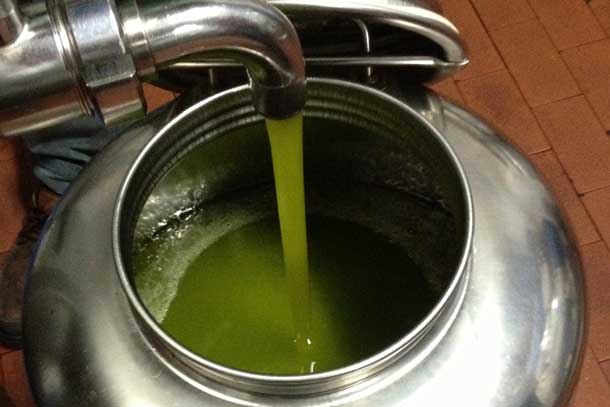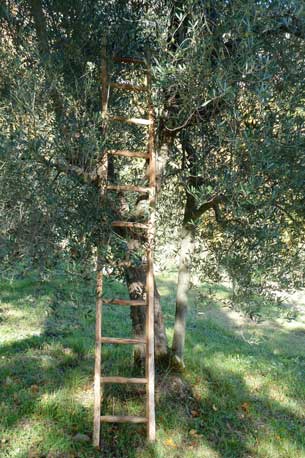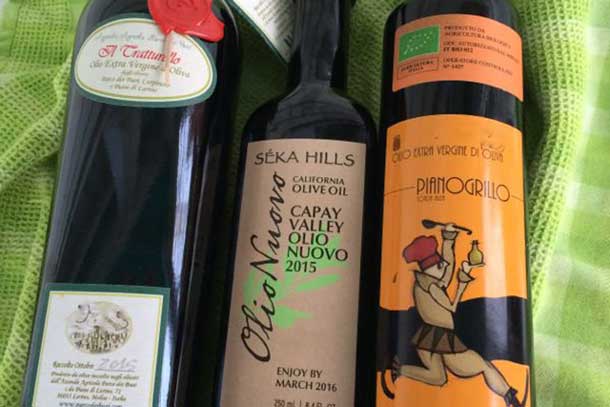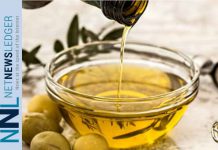
THUNDER BAY – (Zester Daily) – It’s an old story — you’ve heard it before, and not just from me — but it’s coming around again. Predictably, just as U.S. specialty markets begin to trumpet the arrival of fresh new-harvest, extra virgin olive oil comes the warning that it ain’t what it seems.
According to journalist Tom Mueller, speaking on the popular CBS News program “60 Minutes,” an astonishing 80 percent of the extra virgin olive oil sold in the United States does not meet the standards for extra virgin.
That statement requires some clarification. To be characterized as extra virgin, legal parameters must be met. They are set by the International Olive Council, and they are liberal. The oil, for instance, must have only 0.8 percent free oleic fatty acid and a peroxide content of 20 milliequivalents, or meq.
But there’s more. To qualify as extra virgin, an oil must be free of defects, with perfect flavor and aroma. And that’s where a lot of extra virgin oil on sale in the U.S. falls down, usually because it is too old (Unlike wine, olive oil does not improve with age.) or has been exposed to damaging light, heat and/or atmosphere. The finest extra virgin will deteriorate very quickly. I know firsthand because once in Tuscany I deliberately exposed a glassful of extra virgin, milled just days earlier from my own olives. Within a week of exposure, it was unrecognizable, pale in color and with almost no flavor or aroma except for the slight development, as yet inchoate, of rancidity.
Much of the 80% of substandard extra virgin oil cited by Mueller (if indeed the figure is accurate, which I tend to doubt) was probably legally produced, bottled and shipped. But once it left the producer’s hands, all bets were off.
Buyer beware

Let me give a disturbing example: In my local Whole Foods I bought a bottle of oil from a Sicilian producer whom I know well, one who makes his award-winning product with scrupulous care. And it shows: The oil has a robust flavor you associate with new oils made from barely mature olives and picked just 12 to 24 hours before pressing. Yet, the oil I purchased was pale yellow, indicating exposure to too much light, and it was unmistakably rancid, so much so I had to spit it out at the first taste.
So buyer beware, or caveat emptor, as they said back in Rome.
The conclusion of this somewhat misguided “60 Minutes” report was simple: The problem with Italian olive oil is a creation — like so many Italian problems — of the Mafia, a catch-all for everything wrong with Italy. And we Americans, who sometimes seem to fear the Mafia as much as we fear ISIS, certainly don’t want to give any support, financial or otherwise, to the dons. So should we all stop buying Italian olive oil?
Hang on a minute. If Italy is ground zero for olive oil fraud, the country is also recognized as ground zero for fraud protection, with not one but three national police forces responsible: the Carabinieri (like state police only national), the Guardia di Finanza (the tax police) and the Corpo Forestale, park rangers who also have the responsibility of investigating counterfeit foods and pursuing anti-Mafia activities. It was the Carabinieri in Turin last November who charged seven top olive oil companies with commercial fraud, among them Carapelli, Bertolli, Sasso and Coricelli. All were accused of selling as extra virgin, at extra virgin prices, oils that barely qualified as second-tier virgin, resulting in a 30% rip-off on the price.
Do the names sound familiar? They should. All these brands are in wide distribution outside Italy (as well as within), and especially in the U.S. through supermarkets and big-box stores. Although media have targeted the brands as “Italian,” in fact Carapelli, Sasso and Bertolli, which all began life a century or more ago as Italian family companies, are now owned by the Spanish multinational Deoleo. On its website, Deoleo promotes itself as “the world leader in the olive oil market.” That’s no stretch — Deoleo owns seven of the most widely sold olive oils in the world, including the abovementioned.
As frauds go, I have to confess, I don’t find this one all that shocking. Selling oil that barely reaches the cheap virgin qualification as more expensive extra virgin? It’s a bit like selling cheap toilet water as Chanel No. 5, and it’s tempting to fault consumers for their ignorance. If you can’t tell the difference between eau de toilette and a Chanel classic, it’s your problem, honey, not mine. Nonetheless, fraud is fraud. While this may be fairly entry-level fraud, it is still deceptive. And illegal. And possibly dangerous to the health of people who consume a great deal of what they believe is heart-healthy extra virgin olive oil.
The core of the problem is that, even in Italy and other regions known for producing fine oil, most consumers, including experienced chefs, have little or no idea what top-quality extra-virgin olive oil ought to taste like. Here’s a simple tip: It should leave your mouth feeling clean, not the least bit greasy, and it should have the fresh, herbal fragrance and flavor of just-cut grass. You’ve never actually tasted fresh-cut grass? Get out there behind the lawn mower and try it. It’s not going to kill you!) The flavor and aroma of fine, fresh olive oil can get a lot more subtle than that, and experienced tasters will detect nuances, from roasted nuts to citrus to green tomatoes and tomato leaves, but basically if you keep in mind the adjectives fresh, grassy, herbal, clean, you’ll be on the right track.
What to look for in olive oil
A well-made olive oil will have a good balance of three basic characteristics: the fruity flavors of sound, healthy olives, and the bitterness and piquancy (pepperiness) that are indications of the presence of antioxidants that make olive oil the fat you want on your table for all its great health benefits. What should be avoided is oil that has a flat, tired flavor, that tastes of rancidity, that leaves your mouth feeling coated with fat or that tastes like a jar of commercial tapenade that was opened three weeks ago and got lost in the back of the refrigerator.
Fortunately, now is a perfect time to educate your palate with the outstanding flavors of fresh, well-made olive oil. From the Mediterranean — especially Italy — and from California, producers are rushing olio nuovo, new-harvest oil, to market. It is expensive, but worth investing in, if only to give you a firm base-line sense of what excellence is all about. Once you’ve tasted it, you will never again mistake bad oil for good.

Here are just a few I have tasted and liked. Please note these are not by any means the extent of fine extra virgin olive oils; these are specifically new oils that I have tasted recently.
From Gustiamo in New York:
-Pianogrillo from Sicily, $38.25 for 500 milliliters.
-Tratturello from Molise, $44.50 for 750 milliliters.
-Rio Grifone, organic from Tuscany, $39.50 for 500 milliliters.
From Market Hall Foods in Oakland, California:
-Séka Hills, top-ranked Californian oil, $18 for 250 milliliters.
-Titone, award-winning Sicilian organic, $28 for 250 milliliters.
-Olio Verde from Sicily, single cultivar, nocellara del Belice, $38 for 500 milliliters.
From Olio2go in Fairfax, Virginia:
-Capezzana from Tuscany, $44.50 for 500 milliliters.
-Frescobaldi from Tuscany, with the prestigious Laudemio seal, $32.95 for 250 milliliters.
-Villa Zattopera from Sicily, single cultivar, tondo Iblea, $36.95 for 500 milliliters.
Direct from the producer, California Olive Ranch:
COR Limited Reserve, $19.99 for 500 milliliters.
Copyright Nancy Harmon Jenkins via Zester Daily and Reuters Media Express


